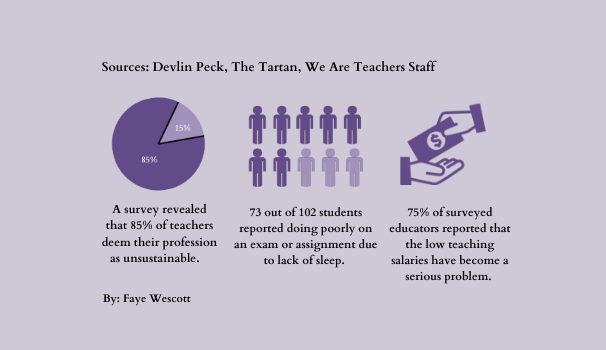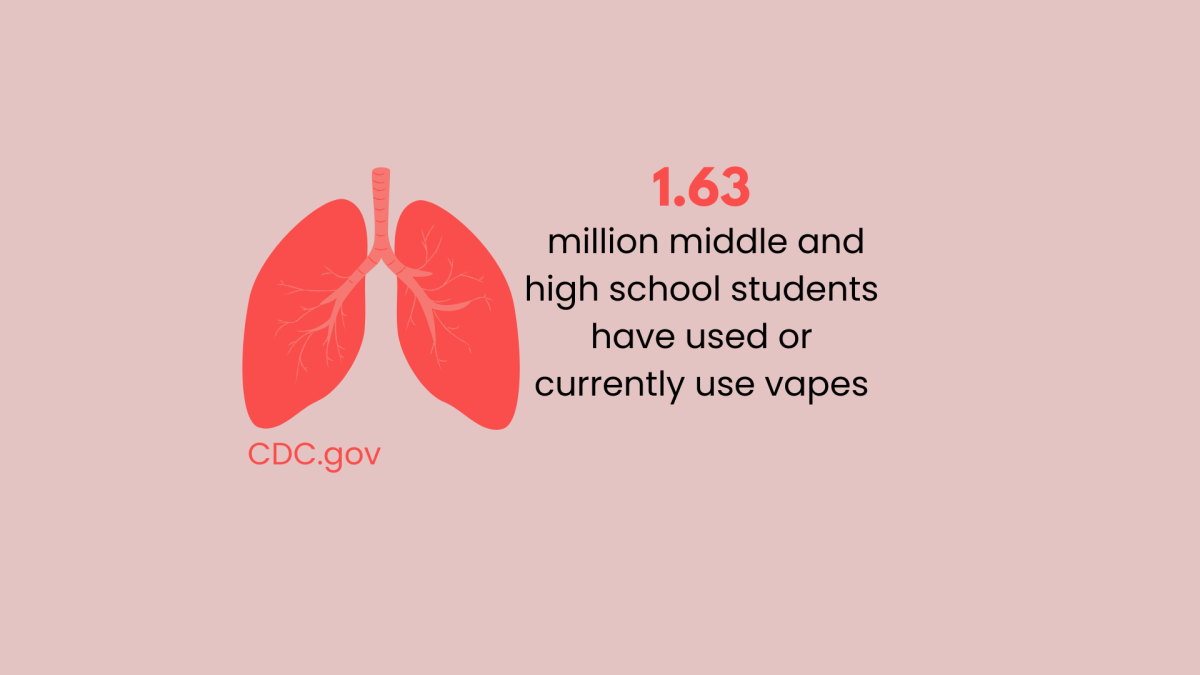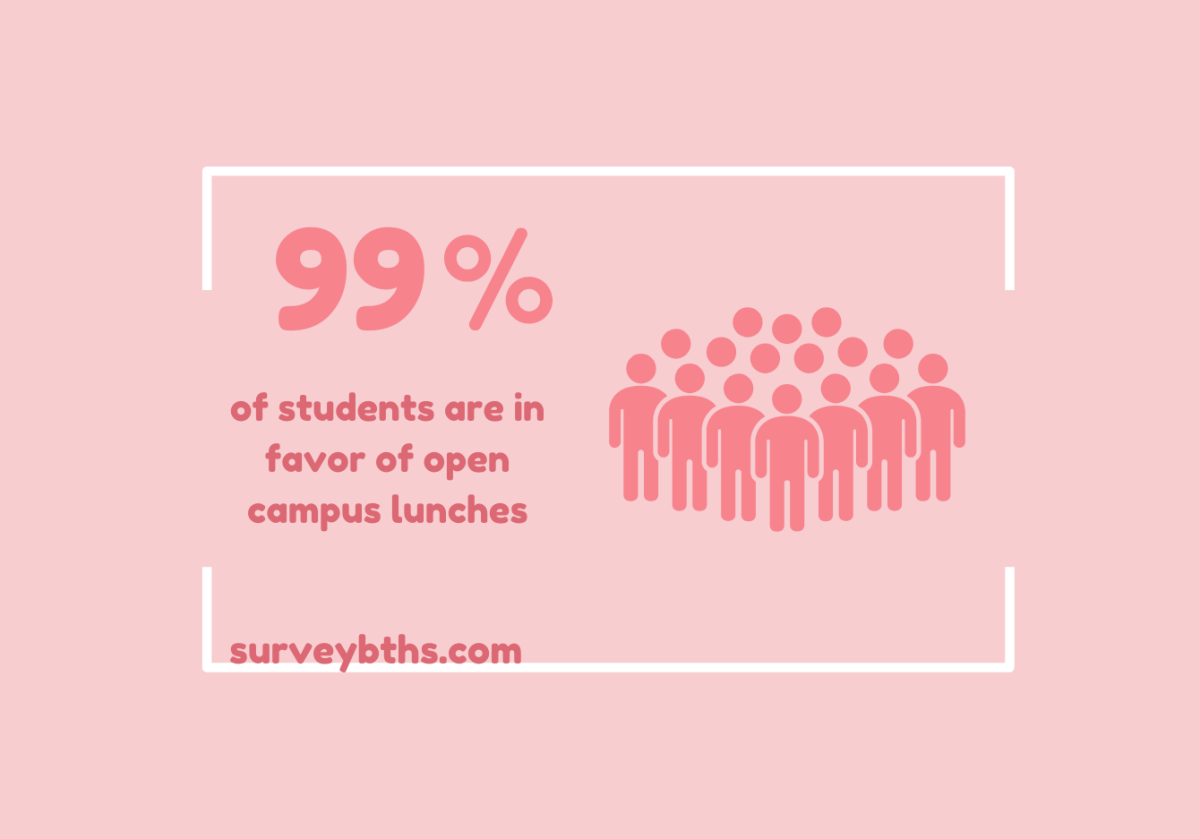In recent months, hundreds of school districts across the U.S. have switched to four-day weeks. Most have made the shift to save expenses and increase student attendance, but the schedule can cause more problems than it solves.
With fewer days to learn comes the necessity to fill those that remain with more curriculum. Poor mental health and school-induced anxiety are already pressing issues for teens today, and making days at the desk longer certainly won’t change that.
The average school day in the U.S. is typically between 7:30 in the morning and 3:00 in the afternoon, equivalent to seven-and-a-half hours of study, excluding after-school activities. While this schedule can already deprive teens of the energy needed to properly develop, districts adopting the four-day week must extend the length of their school days in order to sustain the required curriculum.
Many teens also often feel a lack of energy during the day due to chronic sleep deprivation. A Stanford study showed that out of 145,000 surveyed high school students, fewer than 19% reported being able to get eight hours of sleep, the minimum recommendation for teens. Academic performance can be severely affected by this insomnia, with 73 out of 102 students surveyed by the Tartan stating that they did poorly on an exam or assignment due to lack of sleep.
The extended schooldays will deduct from the short time already given for students to rest, exacerbating sleep deprivation and therefore academic struggles. The subtraction of free time would be especially ill-advised for both the mental and physical health of students, as well as implement unfair restraints to their personal schedules.
For schools introducing this plan, students may even have less time to complete after-school assignments while balancing extracurriculars, therefore minimizing the amount of time for sleep.
After implementing the four-day week, the Liberty Independent School District in Texas now begins the day at 7:30 am and ends at 3:40 pm, just over an astonishing eight hours in length.
Not only can students suffer from the shift, but many teachers already face financial struggles due to low teaching salaries and work overload. While some districts are making the change in order to maintain their teaching staff, several are using the extended weekend as an alternative to raising teacher salaries, with 78% of educators reporting that the low pay has become a serious problem.
Even for schools that have not cut the school week down to four days, the increasing level of burnout and stress-related instability in teachers applies to almost every school. A survey revealed that 85% of teachers deemed their profession as “unsustainable” due to the strenuous environment and rising health risks that come with it, including headaches and even heart palpitations. While the four-day schedule would eliminate one of the stress-inducing weekdays for teachers, the issue would be substituted by even longer working hours rather than solving it.
In addition to students and teachers, the four-day schedule may also affect working parents. Especially for kids who are unable to drive themselves to class, parents must already carve time out of their busy working schedules to make the commute from school to work. Though one less weekday may offer less travel for parents, they still must find ways to occupy their children while they’re at work, a struggle especially apparent for those with younger kids.
A study by the Pew Research Center revealed that 56% of working parents reported having difficulty balancing work and family with a regular five-day schedule, with 46% of families having two full-time working parents. Even translating into the workplace, 41% of employed mothers reported that being a working parent has made it more difficult to advance in their careers. These issues would only magnify with the deduction of a school day, putting a strain on parent’s work schedules and occupational status.
Some students argue that the four-day schedule will offer more free time outside of school, but this will provide no true benefit. Because school days will have to be extended as a result of having fewer hours to teach the required material, students will actually have less spare time after school for extracurriculars. Homework, as well as other after-school tasks, will also intrude into this time and bleed into the three-day weekend if not completed the day something was assigned.
As students, we need to remember that having a four-day schedule would only be beneficial under restricted circumstances, not with a normal workload. During the pandemic, CHS allowed students a mental health day every Wednesday. But now that student responsibilities have been reinstated, time away from the classroom is simply no longer plausible. Both teachers and students need every possible minute on campus to fit the required material in order to graduate, and only conditions under the pandemic would allow lenience on this policy.
School districts need to prioritize the needs of the community rather than the expenses that come with education. Prolonged hours per day will make all the difference when it comes to the health and well-being of teachers and students, who can experience extensive burnout from the taxing schedule. With this in mind, students at CHS should consider the benefits they already gain from the full-length week before wishing for four days.











Al • Mar 23, 2024 at 5:50 pm
Faye, a really fine discussion of an important topic.
I see a very big problem for the parents of very young children who need daycare, which can be a heavy financial burden for those with marginal income.
Love my wonderful Granddaughter, Grampa